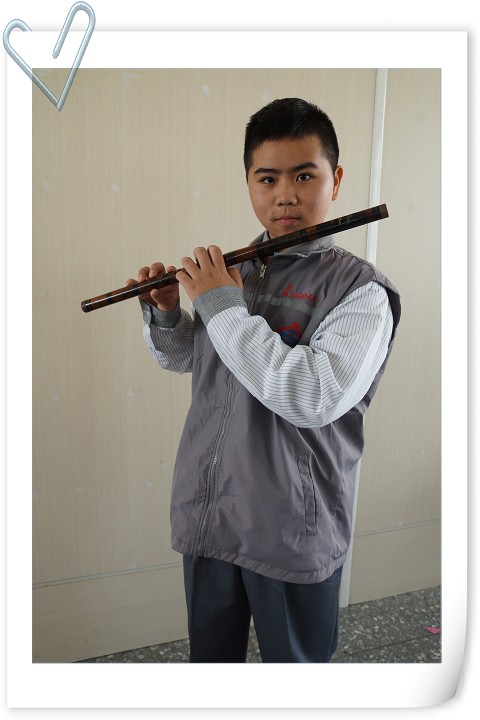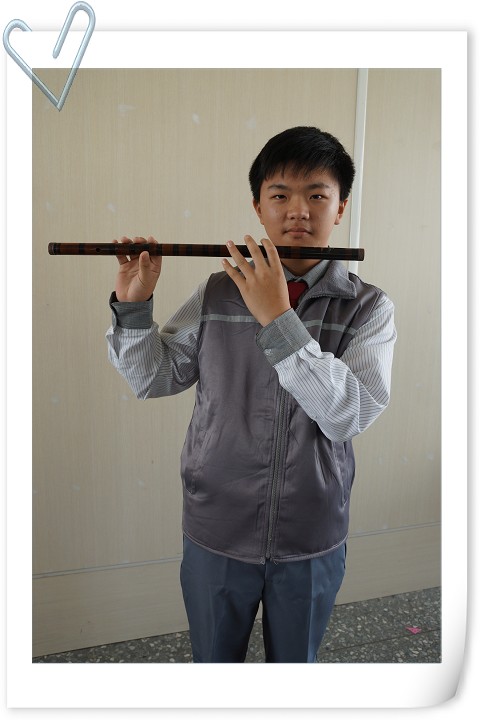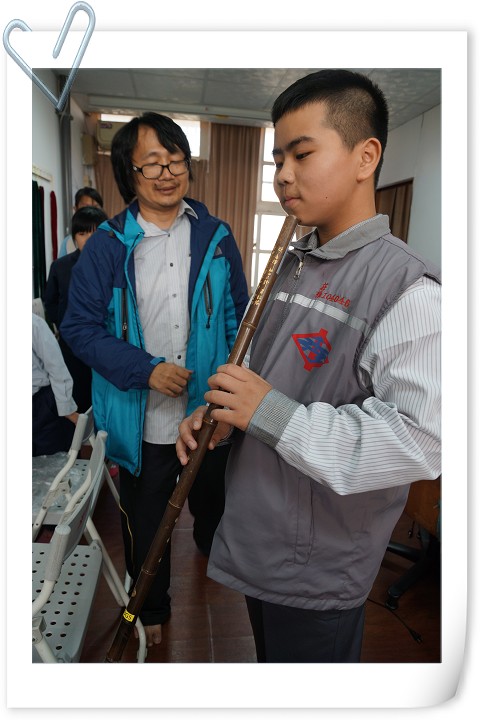The Introduction and Experience of Wind Instruments
Suona |
|||
The suona produces sounds with its whistle. It is categorized into the gaoyinsuona (high pitch), the zhongyinsuona in D (alto), the diyinsuona in various keys (bass), and the xiaosuona in D and C (sopranino) or the haidi in G and F (piccolo). In folk activities and the celebration of weddings and funerals, the suona is a most important instrument. |
|||
Experience Sharing |
|||
It looked easy while the performers were playing the suona. But after I tried, I realized that it required large lung capacity to produce beautiful sounds. |
|||
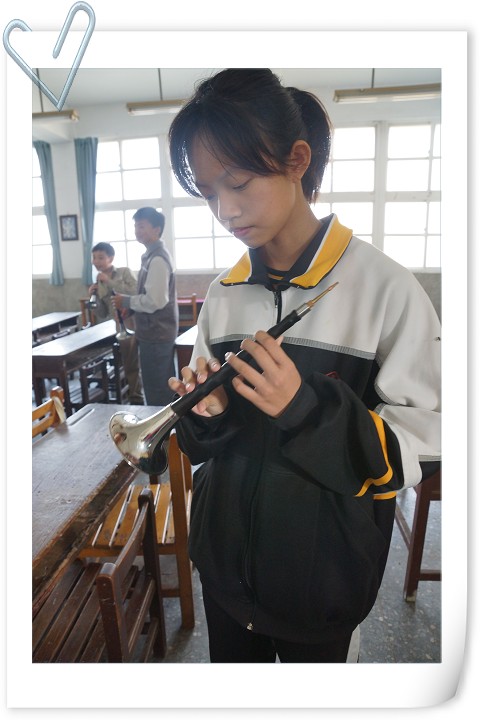 |
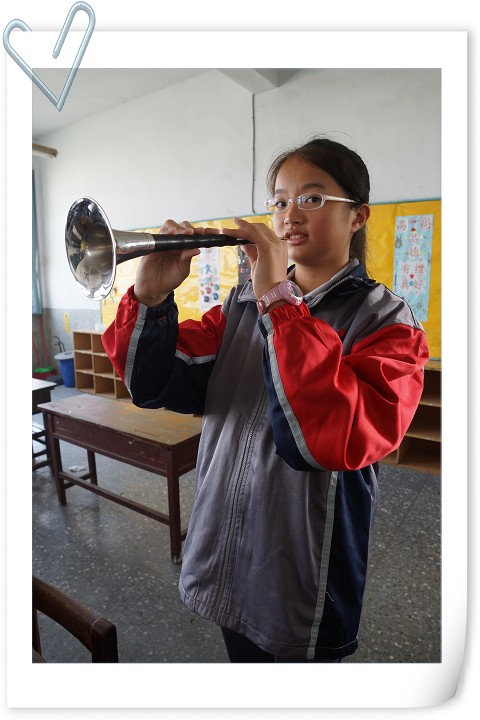 |
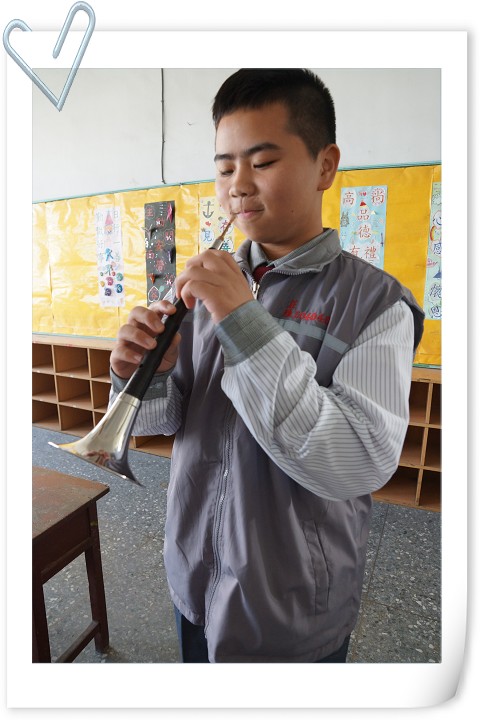 |
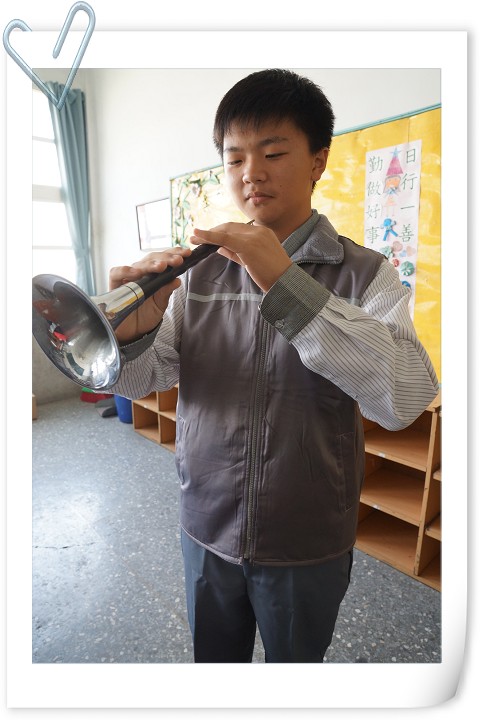 |
| Experiencer: Miao-ru Chen |
Experiencer: Kai-li Syu |
Experiencer: Cheng-yi Jhang |
Experiencer: Zih-wei Wang |
Sheng |
|||
The sheng produces sounds with its reed. The sheng is played by alternately blowing and inhaling. It is the only pipe instrument which can produce sounds by both blowing and inhaling. Traditional sheng can be classified into soprano sheng, alto sheng, and bass sheng. After improvement, there are keyed sheng and amplified sheng. It is the only pipe instrument in traditional Chinese music which can produce sounds by both blowing and inhaling. It can also produce chord. It is widely used in the ensembles of CCCO. Once you blow it, it will produce sounds. Thus, it is the easiest pipe instrument to start. It has clear and bright sounds and wide range of voice. It can also be used for solo. |
|||
Experience Sharing |
|||
The sheng has special appearance. It is an interesting musical instrument. But it also requires large lung capacity to produce good sounds. |
|||
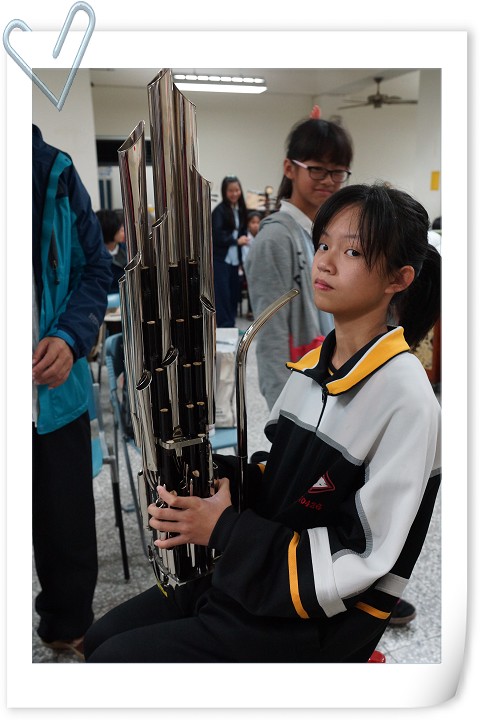 |
 |
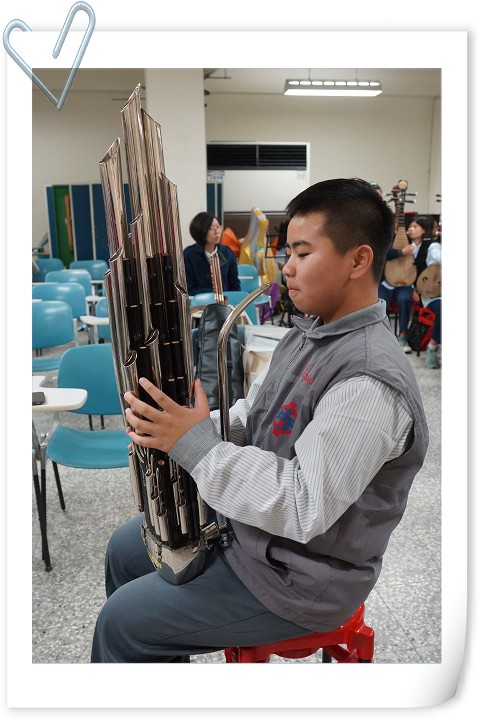 |
 |
| Experiencer: Miao-ru Chen |
Experiencer: Kai-li Syu |
Experiencer: Cheng-yi Jhang |
Experiencer: Zih-wei Wang |
 |
 |
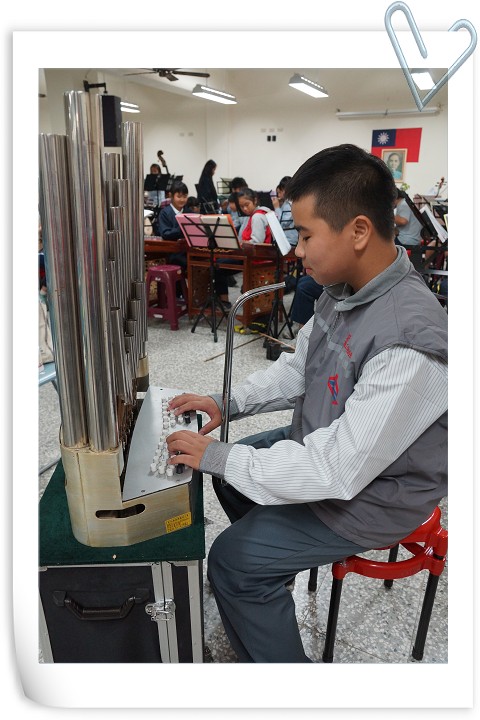 |
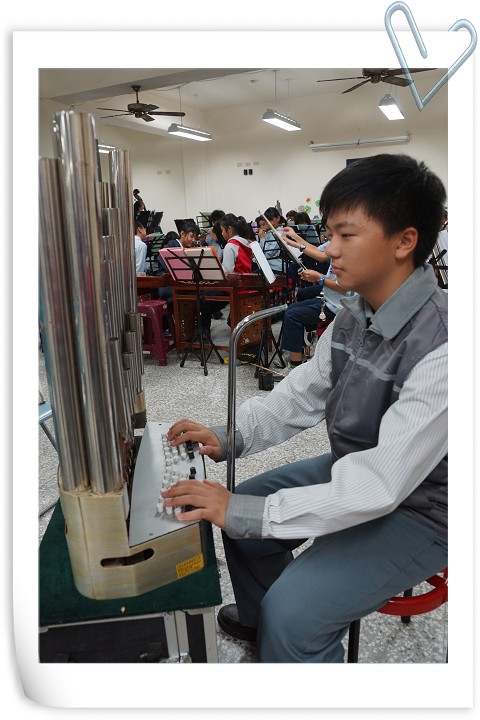 |
| Experiencer: Miao-ru Chen |
Experiencer: Kai-li Syu |
Experiencer: Cheng-yi Jhang |
Experiencer: Zih-wei Wang |







